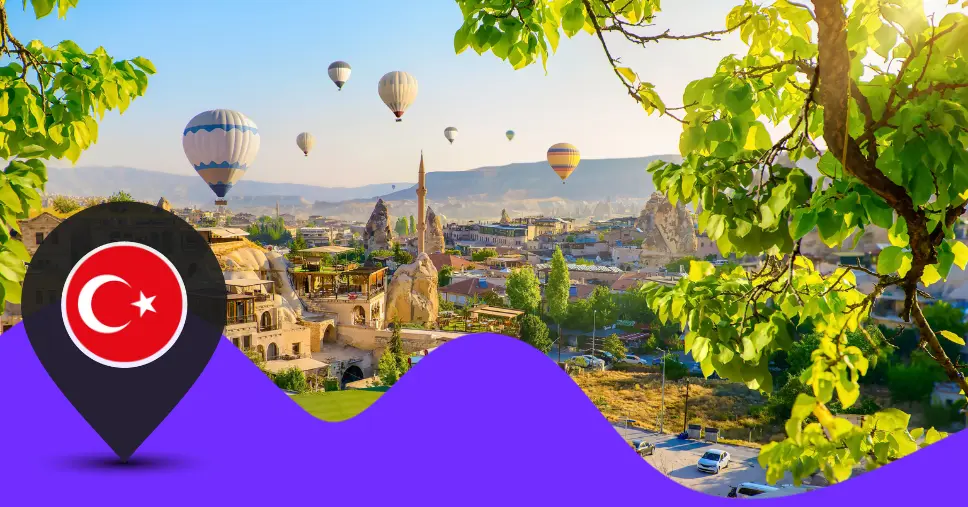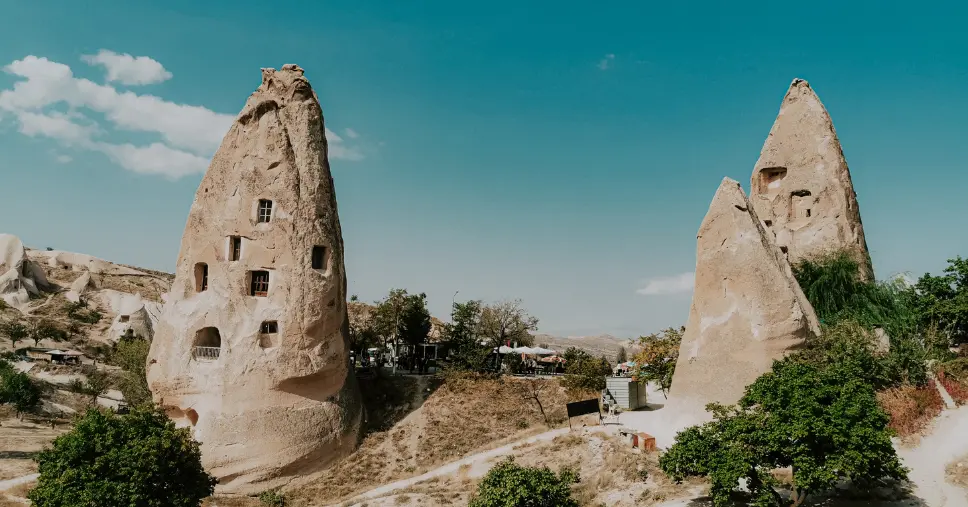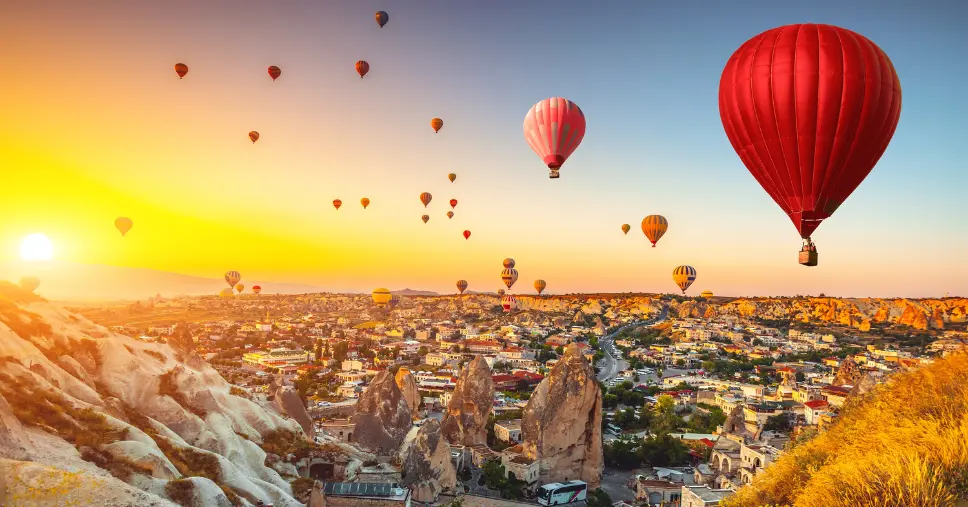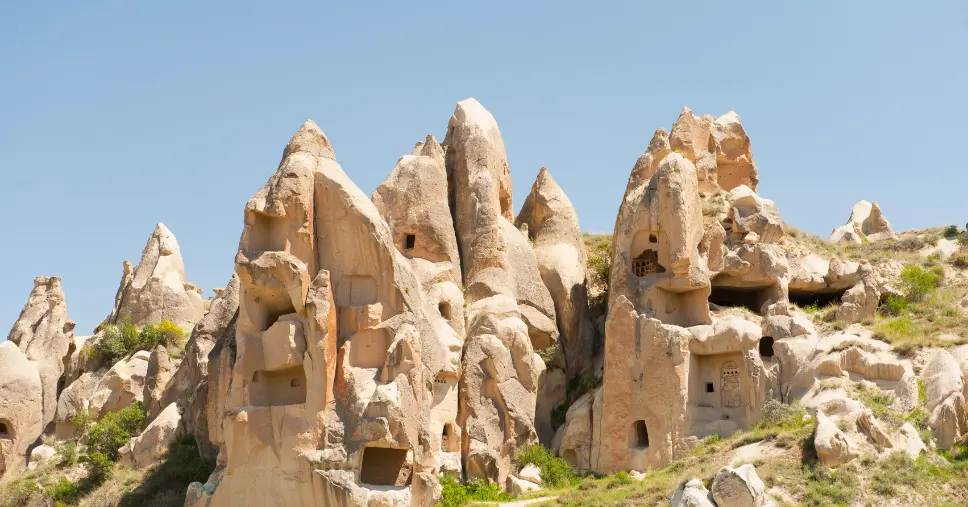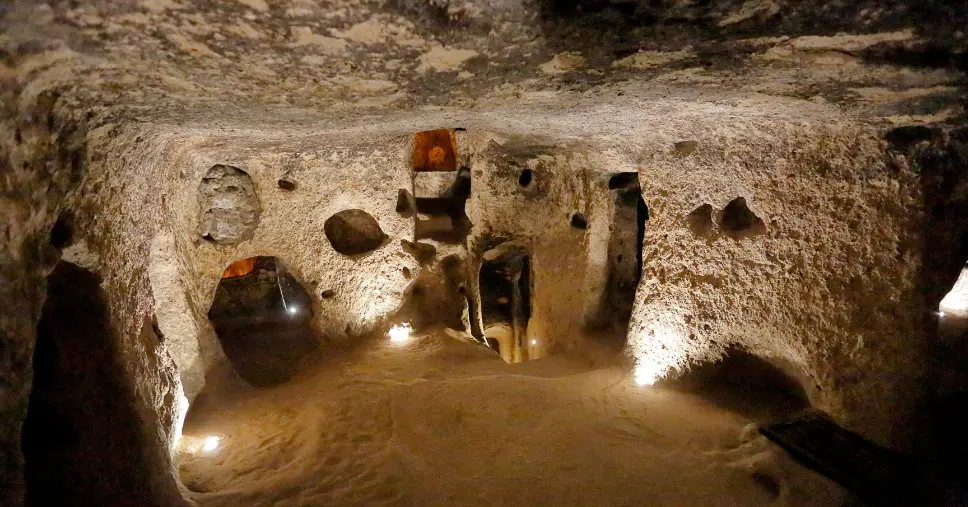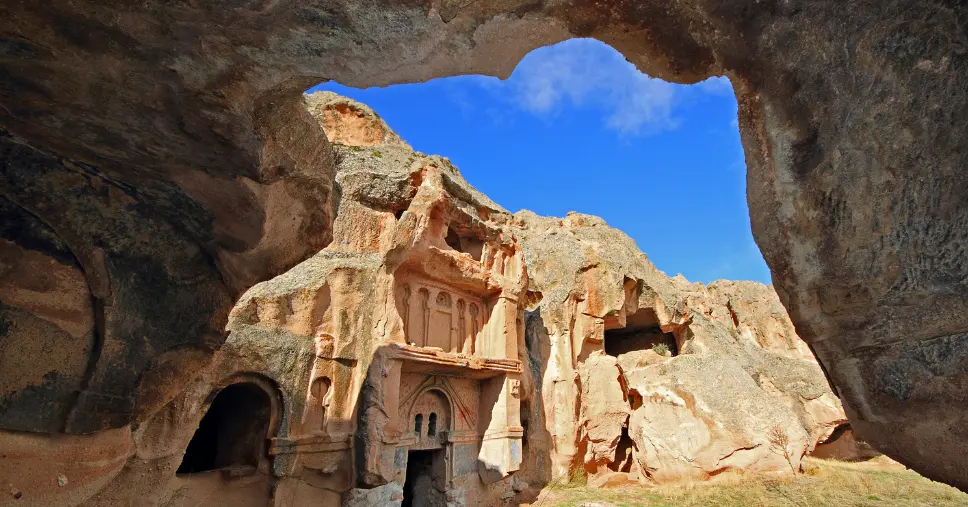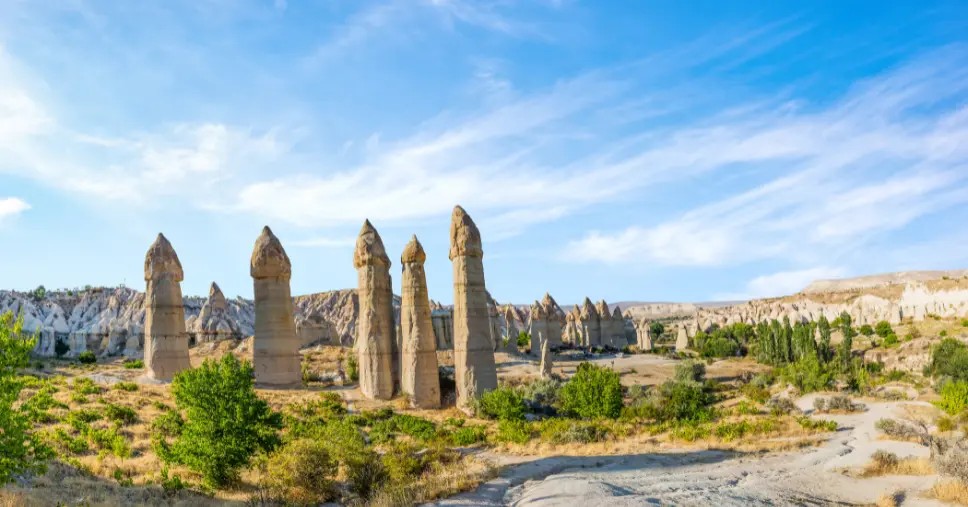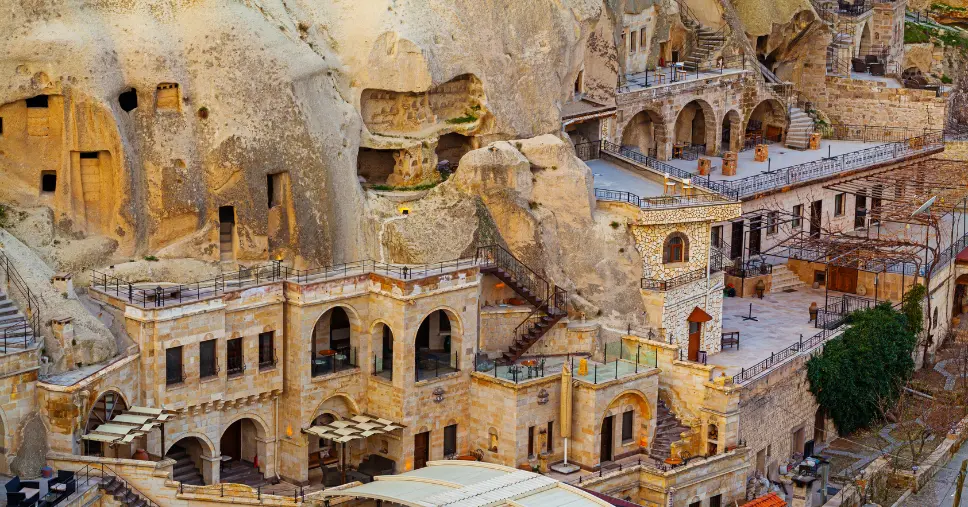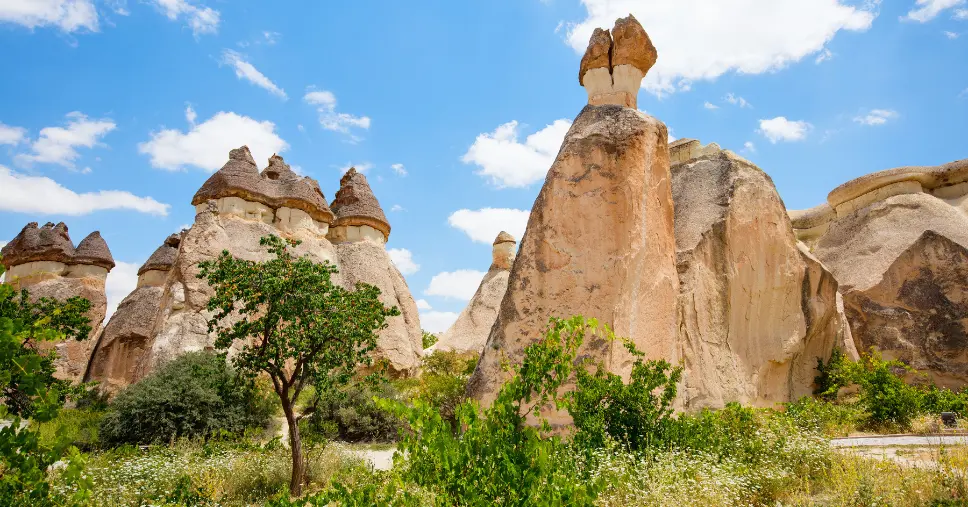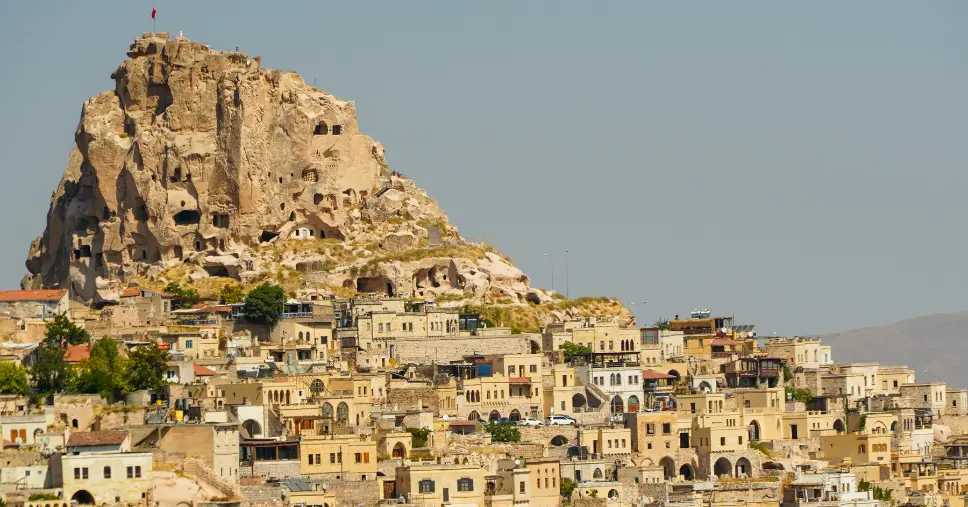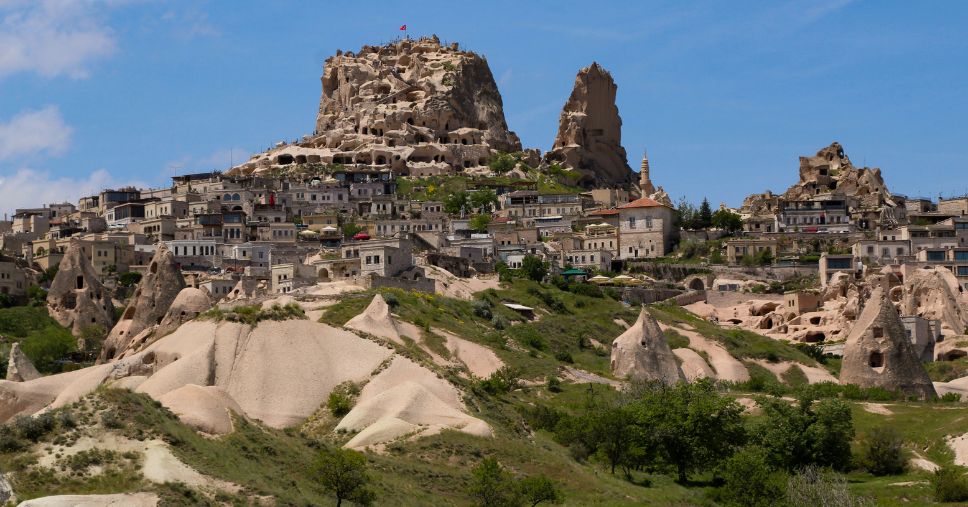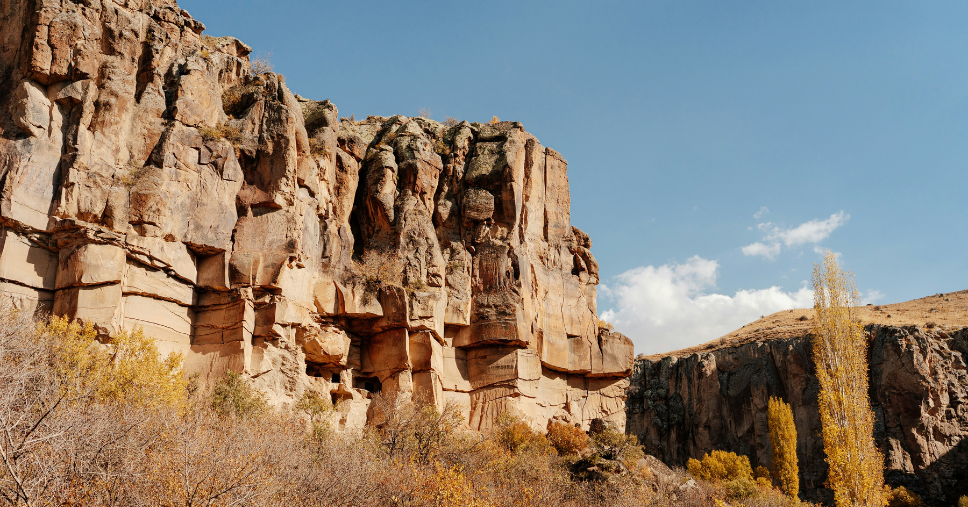Cappadocia’s most beautiful places offer something for everyone, whether you’re seeking adventure or history. We’ll show you the stunning landscapes and rich history that make Cappadocia unique.
A hot air balloon ride is one of the best ways to experience the region’s beauty, offering sweeping views of fairy chimneys at sunrise. Cappadocia’s history spans millions of years, with volcanic eruptions shaping the landscape into its current form.
The area is also home to ancient underground cities and rock-hewn churches, showcasing early Christian life. Hiking through its valleys or exploring its historical sites offers an unforgettable experience.
